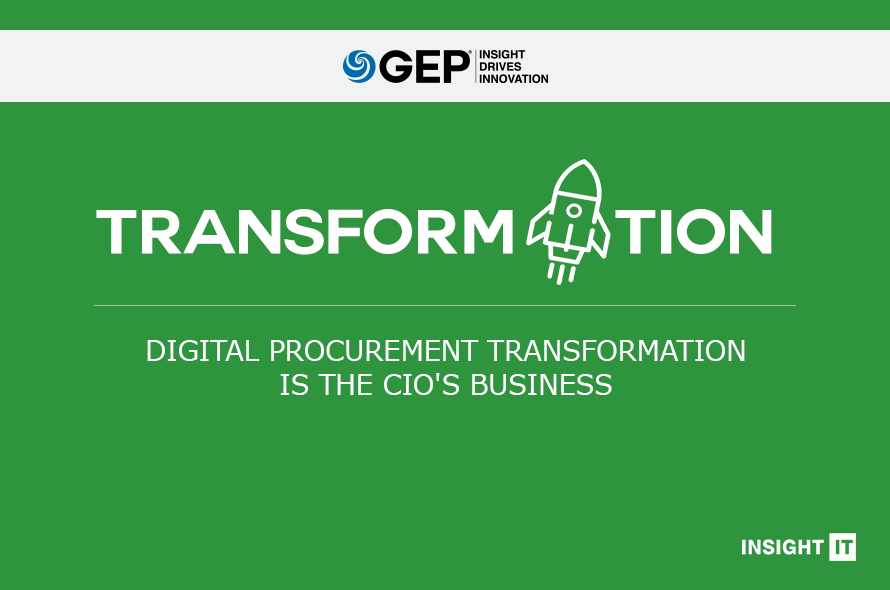The earliest generations of CIOs were denizens of the so-called mainframe era, a reference to the mainframe computers that were used to automate back-office processes. Being a CIO in those days was primarily a technical job, concerned with delivering and maintaining corporate IT systems.
All this changed in the 1990s. Suddenly, every business needed to have a website — but that was just one piece of a much larger digital approach to overall business strategy. The CIO became a key leader within the business, monitoring technological advancements and making crucial recommendations for leveraging technology to make businesses more efficient, more productive, and more profitable.
Today, the various business functions are looking to IT to guide them as they struggle to adapt to the seismic shifts triggered by digital technology — supposedly the key that unlocks the door to a world of new opportunities for working better, faster, and more impactfully.
Current tech media is consistently advancing the message that digital transformation is no longer an option; it's the imperative. And as we put it ourselves in our earlier INSIGHT IT article, “New on the CIO Agenda,” the CIO and IT team may be feeling like they've won the corporate popularity contest, fielding demands from many internal business functions to support them through their digital transformations.

Procurement: The Case for Digital Transformation
From our point of view, procurement should get priority from the CIO in the race toward digital transformation. Procurement — often overlooked and underestimated in terms of its potential contributions to enterprise growth and competitiveness — is an enormous asset to the business. The CPO and procurement teams, simply stated, are the people who control the company's spending and buying. Their job is to save the company money, and by doing so, to directly and positively impact the bottom line.
In fact, we'd even declare that procurement is the perfect proving ground for IT to demonstrate its value as a digital transformation leader. Pre-digital transformation, procurement is typically hampered by tedious, time-consuming processes and limited reach and effectiveness. Contracts are disconnected from purchasing; spend tracking and supplier performance management get bogged down in spreadsheets and email. Resentment from other teams and departments grows as procurement imposes roadblocks resulting from its own outmoded infrastructure.
Digitally transformed procurement, on the other hand, can show the rest of the business what can be accomplished when you do away with disparate systems and disjointed solutions that impede and frustrate users and stakeholders. When information can flow freely, and data becomes visible, and processes and workflows become easy to understand and satisfying to use — then everyone, within and outside procurement, becomes more productive and more effective. And IT gets due credit for bringing about this enterprise-wide advancement.
Here are some of most pertinent points of the IT business case for focusing on digital procurement transformation:
 Freedom and Flexibility
Freedom and Flexibility
We can probably all agree with the statement that real transformation will remain out of reach as long as the business stays shackled to resource-consuming ERP systems. State-of-the-art SaaS, however, shifts these burdens from IT management to the service provider. Once freed from its caretaking obligation, IT can refocus itself on strategic and innovative activities, such as selecting software that is truly fit for purpose and serves to accelerate constructive change.

In the case of procurement, the opportunity for IT is to recommend and implement a platform that can unify “upstream” (source-to-contract) and “downstream” (procure-to-pay) into a streamlined source-to-pay operation. Unifying all the tasks of source-to-pay into a single workspace eliminates redundancy, maximizes visibility and control, and optimizes results. And the IT team benefits from not having to manage and integrate separate pieces of procurement software, which allows for cost savings and greater efficiency.
 Cloud Computing
Cloud Computing
In addition to the obvious infrastructural advantages of cloud software, other gains
available to organizations which adopt the model include increased collaboration among team members, the ability to access and edit files in real time from any location, and better security from the cloud provider's expertise, attention and backup capabilities.
Fortunately for the IT team, the leading procurement technology already exists, having been built in the cloud. Procurement software platforms such as GEP SMART — which is cloud-native, built on the world-class infrastructure of Microsoft Azure — deliver the power and performance required by procurement organizations within the largest and most complex global enterprises. And cloud-hosted procurement applications provide superior scalability and flexibility, responding rapidly to changing needs in an increasingly unpredictable business climate.
 Getting a Grip on Emerging Technologies
Getting a Grip on Emerging Technologies
Recent studies have revealed a clear divide between business leaders' perceptions of how ready they are to assimilate and leverage emerging technologies — such as artificial intelligence, robotic process automation, the Internet of Things, and blockchain — and the actual state of readiness of their enterprises.
Again, IT can demonstrate its digital transformation “chops” to the larger enterprise by transforming procurement with cutting-edge procurement software platforms that incorporate emerging technologies — some of which are reaching the stage of practical application (as opposed to just theory). Automation is already built in at source, and data is both created and collected across the various procurement processes. This data engine can be leveraged by the new emerging technologies to accelerate efficiencies and thereby increase procurement's value to the business.
Conclusion
Ironically, both procurement and IT have been known to suffer from an internal image problem. They often get pigeonholed as the “bad guys,” forcing their colleagues in other departments to obey rules or use things that they didn't want. By managing the digital transformation of procurement, IT can spearhead the creation of a better, more valuable service in which purchasing is far less taxing and enterprise growth is directly and positively impacted. In the process, IT gets to raise its own profile, proving to the whole company that it is legitimately in the digital transformation business — harnessing digital technology and using it to drive a formidable competitive advantage that benefits everyone.

